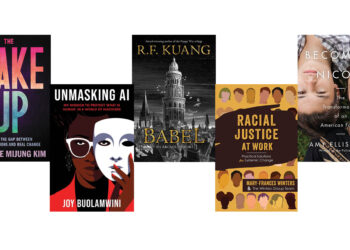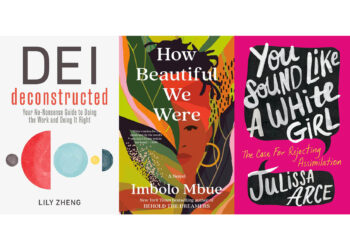When the holiday season begins, we often find ourselves in a reflective mood. As an annual tradition we take this chance to look back on the best books we encountered during the last year. Now, this is not a “best books of 2013″ list, but a list of the best books the Chefs read during 2013 — the books might be classics, a few years old, or brand new. This is one of the great things about books in all forms — they endure, invite visitation and revisitation, and beckon with ideas. Here’s Part 2 of our list, Part 1 can be found here.
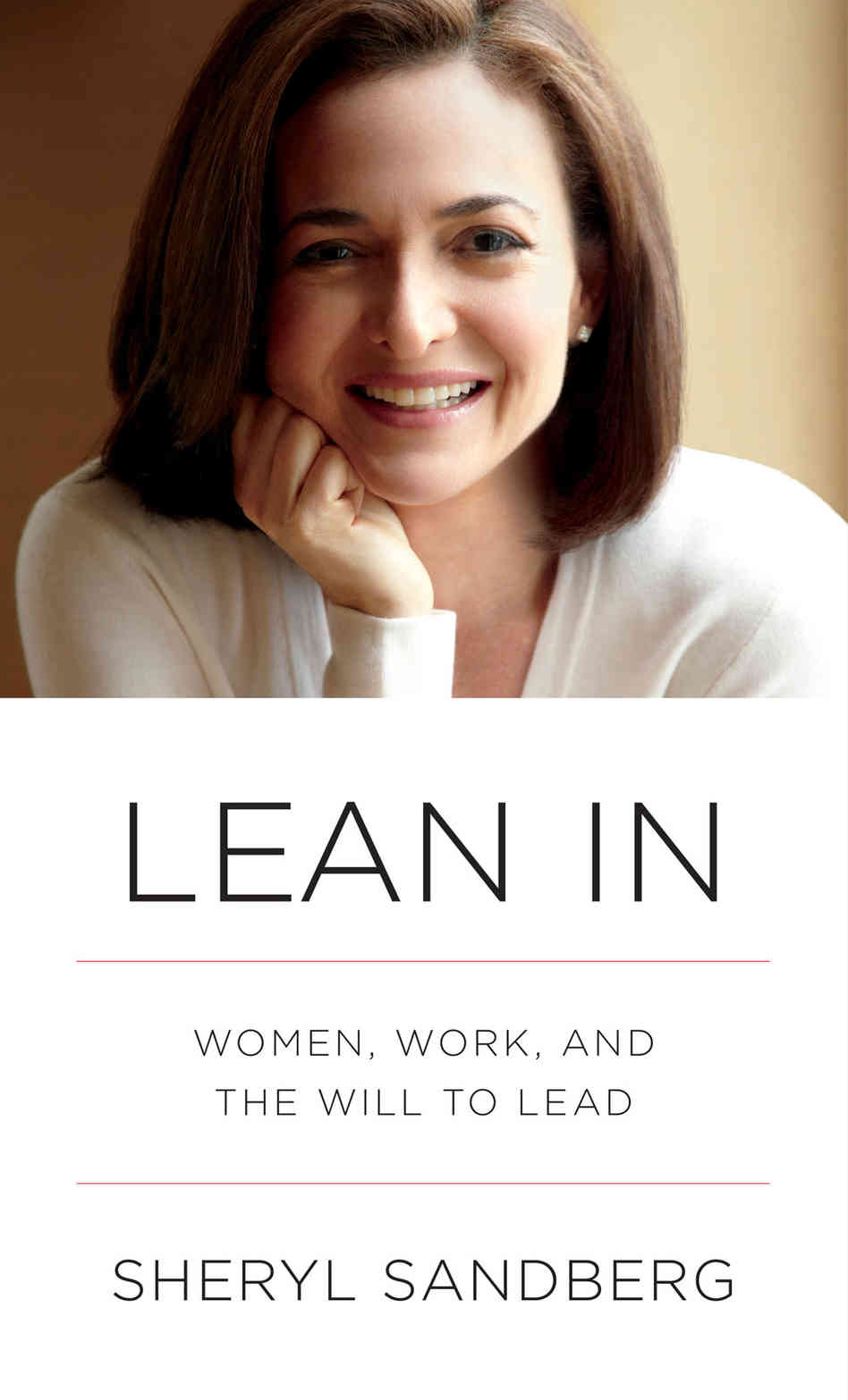 Alice Meadows: I’ve cheated and picked two books (again!) this year – partly because they both made a big impact on me and partly because, although one is fiction and one non-fiction, I found them very complementary.
Alice Meadows: I’ve cheated and picked two books (again!) this year – partly because they both made a big impact on me and partly because, although one is fiction and one non-fiction, I found them very complementary.
The first is Lean In by Sheryl Sandberg. While I don’t necessarily agree with everything Sandberg says, I do admire her for using lots of examples from her own life, many of which are not hugely flattering. Her life may be quite different from most of ours, but there are still lessons we can learn from. Most of all, though, I love the fact that she draws on so much research throughout the book, much of it scholarly. I’ve found myself quoting from that research time and again since reading it – so thanks Ms Sandberg for helping me make a stronger case for women leaders by giving me lots of hard evidence.
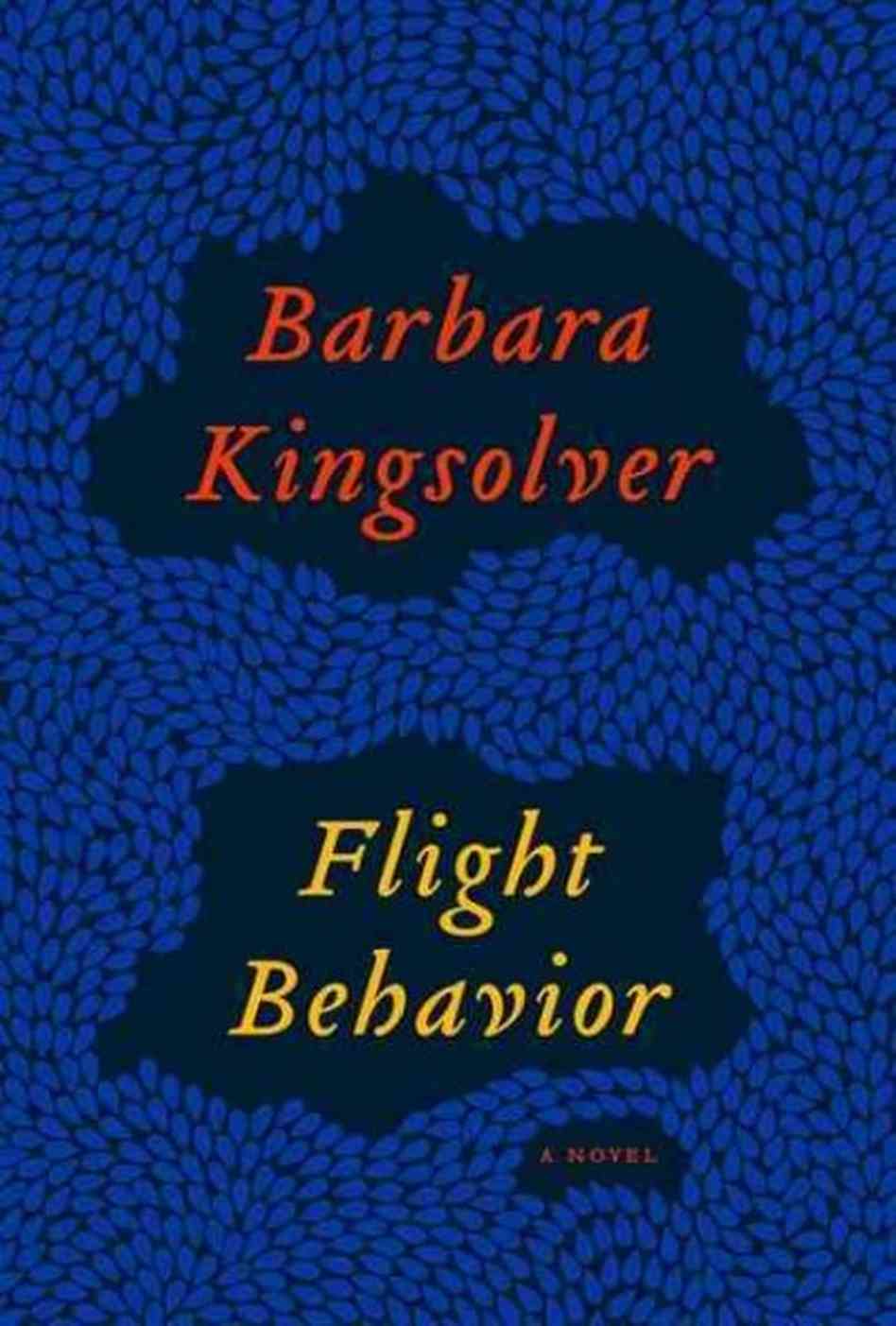 My second choice is Flight Behavior by Barbara Kingsolver, an author whose books I always enjoy. This one – with its twin themes of climate change and women’s empowerment – especially struck a chord, all the more so since I read it right after Lean In. The protagonist is Dellarobbia Turnbow, a young and poor stay-at-home mother in rural Tennessee, who first discovers and then becomes obsessed with the monarch butterflies that – due to climate change – migrate from Mexico to her family’s land in the Appalachians. Hired to help monitor the butterflies by an eminent scientist who comes to study them, she becomes increasingly empowered as a result of the knowledge, confidence, and income she gains as a result. The Dellarobbia we see at the end of the book is a stronger, happier, more independent woman – one whom we like and respect all the more for seeing her struggles with her in-laws, her unhappy marriage, her poverty, her lack of education, and even her smoking, along the way.
My second choice is Flight Behavior by Barbara Kingsolver, an author whose books I always enjoy. This one – with its twin themes of climate change and women’s empowerment – especially struck a chord, all the more so since I read it right after Lean In. The protagonist is Dellarobbia Turnbow, a young and poor stay-at-home mother in rural Tennessee, who first discovers and then becomes obsessed with the monarch butterflies that – due to climate change – migrate from Mexico to her family’s land in the Appalachians. Hired to help monitor the butterflies by an eminent scientist who comes to study them, she becomes increasingly empowered as a result of the knowledge, confidence, and income she gains as a result. The Dellarobbia we see at the end of the book is a stronger, happier, more independent woman – one whom we like and respect all the more for seeing her struggles with her in-laws, her unhappy marriage, her poverty, her lack of education, and even her smoking, along the way.
Two very different perspectives on empowering women, both equally inspiring for me.
 David Wojick: I do not read books so I will review a portal, since I use a lot of portals in my work. Actually I am cheating because this is also a portal that I helped build. It is WorldWideScience.org (WWS), a true tour de force of federated search. WWS integrates almost a hundred other science portals, most of which are national in scope, while some are international. The chief US contribution is Science.gov, itself a federated portal which integrates numerous US federal agency research report portals. Both WWS and Science.gov were built and are operated by the Department of Energy’s Office of Scientific Information (OSTI). Deep Web Technologies is the amazing developer.
David Wojick: I do not read books so I will review a portal, since I use a lot of portals in my work. Actually I am cheating because this is also a portal that I helped build. It is WorldWideScience.org (WWS), a true tour de force of federated search. WWS integrates almost a hundred other science portals, most of which are national in scope, while some are international. The chief US contribution is Science.gov, itself a federated portal which integrates numerous US federal agency research report portals. Both WWS and Science.gov were built and are operated by the Department of Energy’s Office of Scientific Information (OSTI). Deep Web Technologies is the amazing developer.
A cool thing about WWS (and which happens to have been my idea) is the query translation function, which Microsoft built and runs. A lot of the national content is in languages other than English. The translator converts a query into each of the content languages and searches that content in its own language. The resulting hit snippets are then translated back into the query language for the user to read. Chosen documents, typically abstracts, are then also translated. Queries can be made in ten different languages. I have found WWS very useful in seeing which sorts of research different countries are doing. Different countries are often pursuing different research strategies, perhaps unknowingly. Of course machine translation is still awful, but you can usually at least figure out what they are talking about, which is far better than nothing. One of my favorite garbles is this: “Analysis of sentence structure is an important link of insurmountable Chinese semantic analysis…” Insurmountable sounds about right actually.
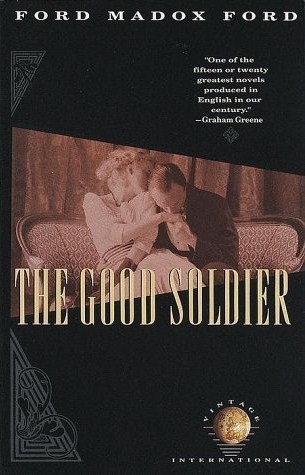 Robert Harington: My favorite reads of the year are not books that were published in 2013. I am so used to reading on my iPad these days, or listening to books on my daily commute from Boston to Providence and back, that it is rare that I crack open the real thing, though I love to look at my library of books gathering dust.
Robert Harington: My favorite reads of the year are not books that were published in 2013. I am so used to reading on my iPad these days, or listening to books on my daily commute from Boston to Providence and back, that it is rare that I crack open the real thing, though I love to look at my library of books gathering dust.
For all that, the first book I mention, I reread the old way – book in hand under a sharply focused reading lamp. If you have not read Ford Maddox Ford’s, The Good Soldier, you should. The book is a perfect escape, and lands the reader deep in uncertainty of character. The egregious deviousness of John Dowell as unreliable narrator is captivating – what could be better than the book’s opening line – “This is the saddest story I have ever heard.” What a line. It is so declarative, yet pause for a moment and you realize you are about to be misled big time.
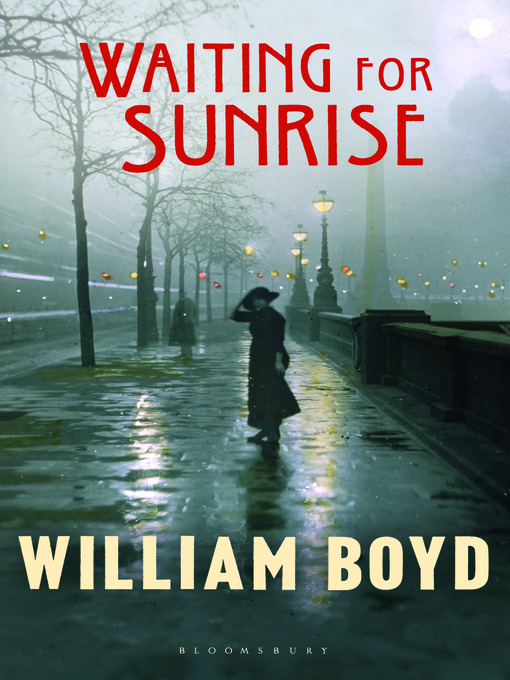 The second is a book first published in 2012; William Boyd’s, Waiting for Sunrise. William Boyd is, interestingly, the author of the just published, new James Bond book, Solo. Waiting for Sunrise is set in Vienna ( I am half Viennese), London (I was born there) and France (been on vacation there). It is a book that is simultaneously seductive and sexy, with impressionable dips into the failings of the human psyche. At another level, it is quite thrilling, with comic timing, moving across continents at a time of an impending First World War, with deceptions, and brave deeds woven in. You should read this book.
The second is a book first published in 2012; William Boyd’s, Waiting for Sunrise. William Boyd is, interestingly, the author of the just published, new James Bond book, Solo. Waiting for Sunrise is set in Vienna ( I am half Viennese), London (I was born there) and France (been on vacation there). It is a book that is simultaneously seductive and sexy, with impressionable dips into the failings of the human psyche. At another level, it is quite thrilling, with comic timing, moving across continents at a time of an impending First World War, with deceptions, and brave deeds woven in. You should read this book.
The third book, rediscovered as an audiobook on Audible, is John Irving’s 1990 book, A Prayer for Owen Meany. This is such a magical story to read – a book that deals with ideas of fate, intertwined with sarcastic views on spiritual fulfillment.  Then, when you add Joe Barrett’s voice, Owen Meany just comes to life in all his vocal oddity. It is hard not to be completely immersed in his knowing view of the world, and the enduring quality of his friendship with the orphaned Johnny Wheelwright. Irving’s New England resonates in acrid descriptions of school life at Gravesend Academy and life beyond.
Then, when you add Joe Barrett’s voice, Owen Meany just comes to life in all his vocal oddity. It is hard not to be completely immersed in his knowing view of the world, and the enduring quality of his friendship with the orphaned Johnny Wheelwright. Irving’s New England resonates in acrid descriptions of school life at Gravesend Academy and life beyond.
I wonder what 2014 will bring?
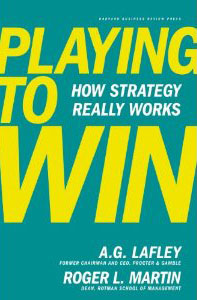 Michael Clarke: Strategy books are not the sort of thing that would usually go on my list of “best reads.” While I keep up with the business literature, it is to the pages of history and fiction that I am generally drawn. That being said, every once and while the business presses (in this case, Harvard Business Review Press) publish a classic. This happened this past year with Playing to Win: How Strategy Really Works, written by A.G. Lafley, CEO of Proctor and Gamble, and Roger Martin, Dean of the Rotman School of Management at the University of Toronto. The book recounts the transformation of P&G between 2000 and 2009 when Lafley was CEO (he is once again after a sabbatical) and Martin a strategy consultant. It draws on a 20-year relationship in which the two discussed, debated, developed, implemented, and witnessed the results of, strategy at one of the world’s largest corporations.
Michael Clarke: Strategy books are not the sort of thing that would usually go on my list of “best reads.” While I keep up with the business literature, it is to the pages of history and fiction that I am generally drawn. That being said, every once and while the business presses (in this case, Harvard Business Review Press) publish a classic. This happened this past year with Playing to Win: How Strategy Really Works, written by A.G. Lafley, CEO of Proctor and Gamble, and Roger Martin, Dean of the Rotman School of Management at the University of Toronto. The book recounts the transformation of P&G between 2000 and 2009 when Lafley was CEO (he is once again after a sabbatical) and Martin a strategy consultant. It draws on a 20-year relationship in which the two discussed, debated, developed, implemented, and witnessed the results of, strategy at one of the world’s largest corporations.
Their thinking on strategy was directly influenced by both Michael Porter (the authors first worked together when Martin was a consultant at Porter’s Monitor Group) and Peter Drucker, to whom the book is dedicated. The book does not offer startling new approaches or insights. It is not a departure from Porter and Drucker nor really an extension. What it does offer instead is a thoughtful and much needed distillation of strategy down to its core tenets, written from the ramparts of a world-straddling company during a period of transition and with the vantage of the past 50-years of thought on business strategy (which for all intents and purposes is the whole of thinking on business strategy as such).
In this sense, Playing to Win is to strategy as Zen is to the Mahayana school of Buddhism from which it sprang. It is a simplication that does not discard anything essential. Swept away are decades of jargon, patented processes, bubble charts, scorecards, and the like. In the end we are left with five questions (five koans): What is our winning aspiration? Where will we play? How will we win? What capabilities must be in place? What management systems are required?
These questions are certainly a nod to Drucker’s The Five Most Important Questions You Will Ever Ask About Your Organization. The difference between Drucker’s questions and those of Lafley and Martin is that the latter set form an interconnected and self-reinforcing decision cascade that can be nested to scale from an enterprise strategy down to an organization’s key operating units. By using this method Lafley and Martin are able to cogently convey both the enterprise strategy of P&G – and that of each of its major divisions – on a single slide. (If a company as complex as P&G can do this, surely there is hope for the rest of us).
Notably, I ran into an acquaintance at HBR Press shortly after the book was published who mentioned they are using the book to develop their own corporate strategy. In software circles, this is called eating your own dog food. An unfortunate idiom but a strong endorsement.
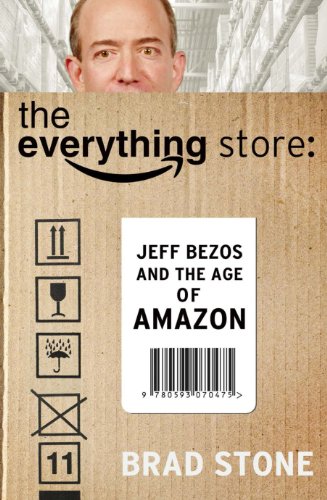 Todd Carpenter: There are two companies that have radically transformed the publishing industry over the past two decades. Interestingly one company is regularly discussed and occasionally even present in discussions, but the other is often just referred to as “the elephant in the room” at industry meetings and is notoriously absent. That company, often referred to as “the company starting with the letter A”, has transformed so much about the publishing industry, it is hard to overstate its impact. Few beyond the company’s visionary founder and some of its early supporters could have ever envisioned its current scale, scope and the transformational impact it has had on the internet, retail and especially the publishing industry. In the nearly two decades since its founding in 1994, so much about information distribution, retail and media consumption has been transformed. As a community, we aren’t yet through this transitional phase. Exploring one of the companies driving those transitions and the people behind it, how it operates and its vision for the future makes for both an entertaining, informative and useful read for everyone in our industry.
Todd Carpenter: There are two companies that have radically transformed the publishing industry over the past two decades. Interestingly one company is regularly discussed and occasionally even present in discussions, but the other is often just referred to as “the elephant in the room” at industry meetings and is notoriously absent. That company, often referred to as “the company starting with the letter A”, has transformed so much about the publishing industry, it is hard to overstate its impact. Few beyond the company’s visionary founder and some of its early supporters could have ever envisioned its current scale, scope and the transformational impact it has had on the internet, retail and especially the publishing industry. In the nearly two decades since its founding in 1994, so much about information distribution, retail and media consumption has been transformed. As a community, we aren’t yet through this transitional phase. Exploring one of the companies driving those transitions and the people behind it, how it operates and its vision for the future makes for both an entertaining, informative and useful read for everyone in our industry.
There was something ironic about reading part of a book about the history of internet book retailing while drinking a coffee in a Barnes and Noble. It has been months since I’d stepped foot in a chain bookshop, preferring either local used bookstores (less and less) or to shop and read electronically (more and more). I passed by the stacks of hardcovers, reflecting how enjoyable a good bookstore can be and how this experience seems to be fading. I also reflected on the how different the industry might have been if Len Riggio and his brother Steve who led Barnes & Noble had acquired Amazon.com in 1996 when they flew to Seattle to meet with Bezos. An interesting footnote of this meeting is the speculation earlier this year whether Amazon was considering buying the struggling book retailer, which continues to this day. Or alternatively what might have happened if the company failed along with many others in the dot.com bust of the early aughts, as it may have without some fortunately timed bond sales in Europe.
As with every start-up story, there are equal amounts of vision, exceptionally hard work, luck, and external detractors as well as supporters. How different groups successfully navigate these turbulent waters is almost always fascinating and gripping, if told well. That is the case with the new history of Amazon.com, The Everything Store: Jeff Bezos and the Age of Amazon by Brad Stone. The twists and turns of how a start-up internet bookseller became a dominant retailer of everything, how it is transforming media, and developed into a major back-bone supplier of net services alone is worth picking up the title for the general reader. The ties to our own industry and the story’s ongoing implications make the book a must-read this fall for leaders in publishing.
Amazon has always been a step a head, a step faster and better equipped to succeed in a digital distribution environment than traditional publishing community. Perhaps the one exception to this was the investment that Barnes & Noble and Bertlesmann made in the Nuvomedia to create the Rocket eBook device in the late 1990s. Had the company not sold itself—for a reported $180+ million dollars, a great return on investment to be certain—the leadership position in the ebook market might be held by someone other than Amazon. That never happened, which led, in part, to the development of the Kindle system in the mid-2000s. The rationale behind its disruptive development is a fascinating read. One element that makes the Kindle aspect of the Amazon story so interesting is the underlying driver and why a company so tied to the web—one of the perennial poster-boy companies of the internet’s disruption of bricks-and-mortar world—was caught flat-footed when it came to the movement of media toward digital forms. While the Kindle has been able to transform book content distribution, it has lagged behind digital music and digital video distribution. In the same way that the music industry has become captive to Apple’s distribution model, so too has the publishing industry become captive to Amazon’s control of the Kindle system. This was due, in part, to the publishing community’s willingness to cede this space to Amazon, because of a short-sighted vision about the adoption pace and the potential size of the ebook market. Publishers, particularly trade publishers have, until recently, seen digital distribution as a sideshow.
In many ways, the STM publishing community has been able to avoid this vendor lock-in to the Kindle distribution system, because of its leadership position in web-based, direct to customer distribution through the library market. Most STM publishers provide their content via web interfaces not through reading devices. In many ways, this has opened a door (albeit an expensive one) for STM publishers to continue to provide content through apps or mobile web interfaces, which can be installed directly onto tablets, which are rapidly replacing dedicated ebook reading devices for digital content consumption. A few publishers have explored apps for ebooks as individual products, but these are generally not cost-effective as one off sales. For STM publishers who are providing journal content as well as book content, if a single app can provide access to both forms (to be fair, no simple task), the per-item delivery costs drop and therefore the economics work better. In some ways, these unique market developments have protected the STM community from the Amazon dominance that confronts the trade publishing community.
Amazon has always sat in a unique place as both benefit and a detriment to the publishing industry. By providing a single go-to source for nearly every book title published, the site provides a vehicle for even the most long-tail of titles to gain visibility and sales. This was especially true of publisher’s back-catalog titles that were given a new lease on life in the marketplace. The sell and distribute model that Amazon built has dramatically reduced the returns issue that was swamping many large publishers a decade ago. By raising expectations and providing competition, the company has forced innovation and creativity on a formerly staid industry. But there was a cost to this service that Amazon felt publishers owed to it in the form of better terms, prices and more streamlined interactions. Amazon has always been known for its tenacious negotiation and hard driving style. Another of the more fascinating elements of the book for the publishing community are the “the Cheetah and Gazelle” strategy Amazon took negotiating with book publishers. While many publishers experienced this from the outside looking in, every publisher should read the section about how this approach worked on the inside, and how the vice was applied. Retail distribution and sales is a bloody game, and Amazon plays it as well as, if not better than any others in the industry. It’s unfortunate that publishing community didn’t seem matched to play the game.
Outside the book itself, the community around it is becoming a story in its own right during just the few weeks since the book was released. It has led a testy exchange of reviews and comments on the Amazon page for the books and in the wider media by both Mackenzie Bezos (Jeff Bezos’ wife), the author and the first Amazon employee, Shel Kaphan. Part of this is corporate communications, part is a clash of personalities, and part is of course simply good publicity. In some ways it reminds me that what this story is covering isn’t just some history from the go-go days of the 90s, it is current history that is still being shaped and will likely play out into the months and years to come.
Discussion
4 Thoughts on "Chefs’ Selections: The Best Books Read During 2013 (Part 2)"
Reblogged this on Living Ethnography.
